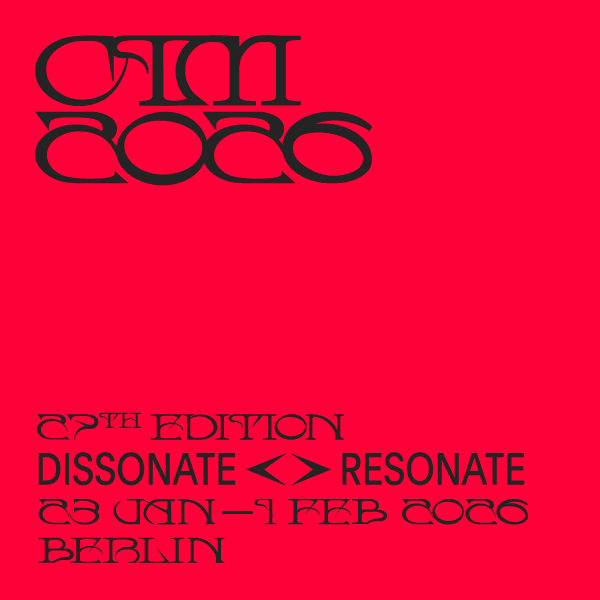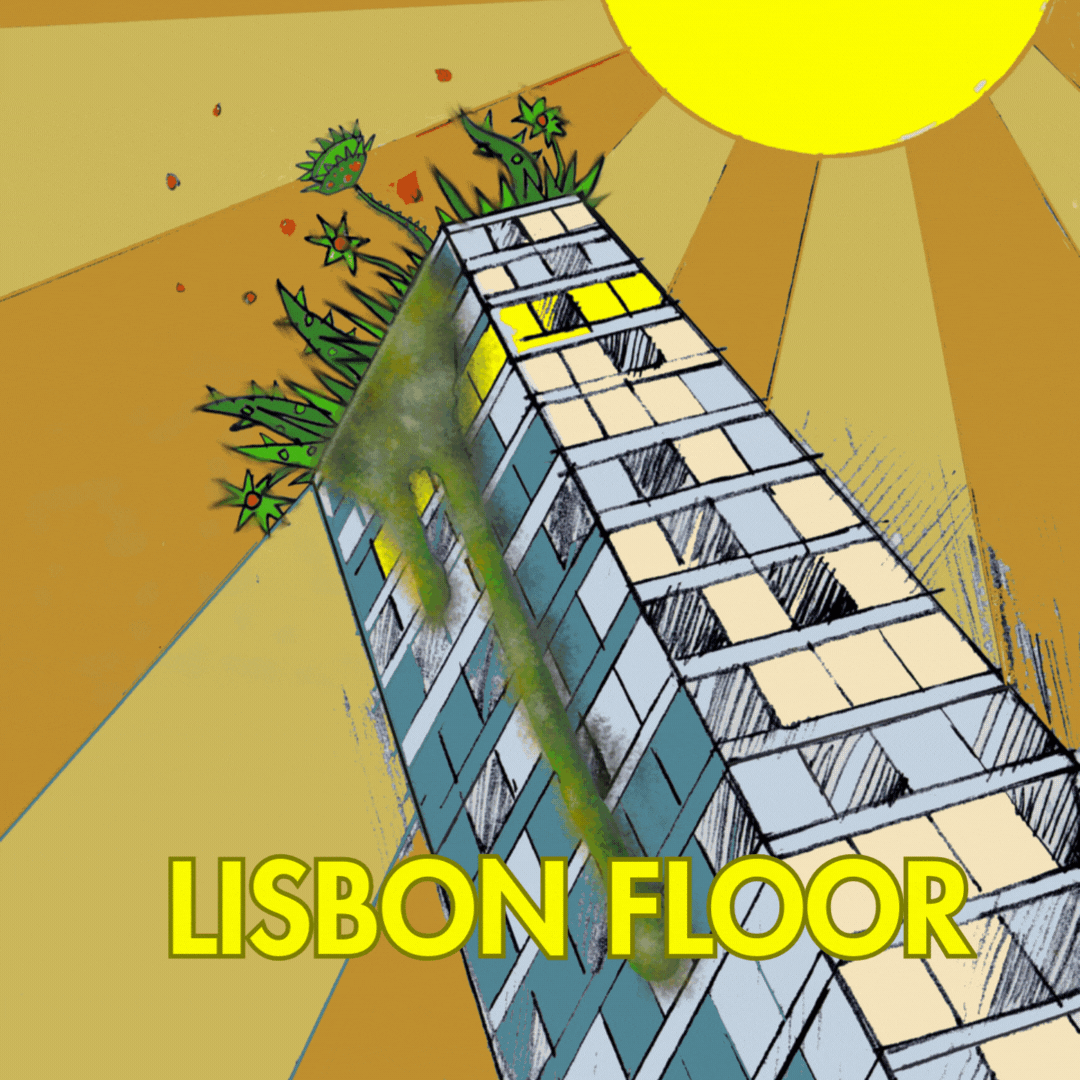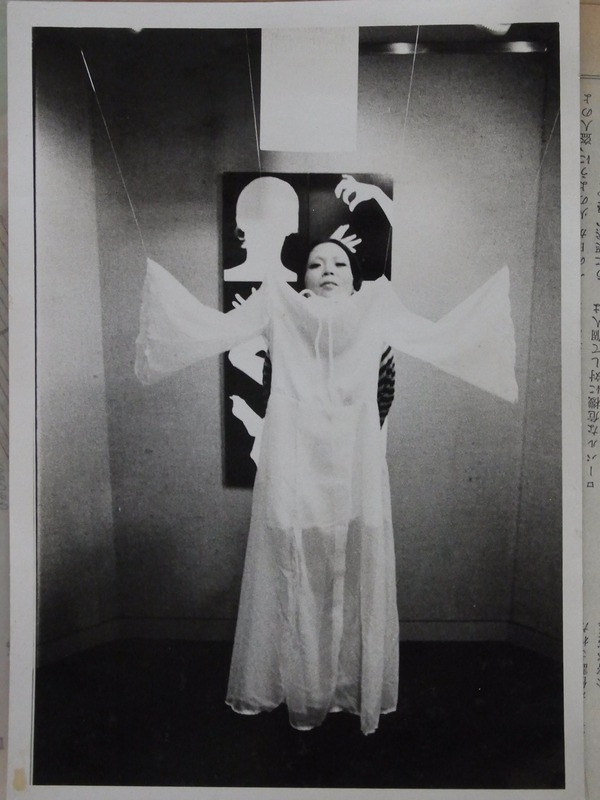
Disappearing Acts: The Resurrection of Tsujimura
In a slightly overexposed black-and-white photograph, a female figure stands in an almost white forest, dressed entirely in white, her black hair a glossy contrast. She is stretching transparent strips of tape between the branches as she moves through the forest like a subdued, nearly non-existent instrument. I imagine how the wind is sliced by the sharp edges of the tape, how it sets the material into a lively motion that creates a fleeting sound. Is it a whisper or a scream?
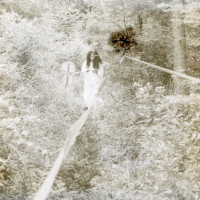
The woman in the photograph is Kazuko Tsujimura, and we find ourselves in her archive, currently displayed at the exhibition space Heirloom on Sølvgade. The photograph is from a 1971 performance in which Tsujimura participated in On-e, a two-day experimental event for 35 members of the artist group Nirvana Commune, held on a meditation platform in the mountains near Suwa, Japan. On-e translates directly from Japanese as »sound meeting«, a collective ritual act where creating sound and listening in harmony with the fundamental forces of nature were meant to produce a kind of resonance across space and time.
This exhibition in Copenhagen is the first ever presentation of her archive
The ghost of Tsujimura reawakened
If you’re not familiar with the Japanese performer and dancer Kazuko Tsujimura, you are, I would say, completely forgiven. As part of the avant-garde scene in postwar Japan, she was indeed involved in countless interdisciplinary collectives from the 1960s until her death in 2004. Yet this exhibition in Copenhagen – curated by Bluestockings (bs) – is the first ever presentation of her archive, and much of her oeuvre was fundamentally based on the idea of disappearing entirely.
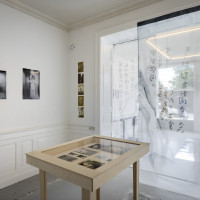
Through her work, Tsujimura sought to discover a »dance without body, without dance«, a practice centered on erasure, masking, and dissolving the body into a spiritual and metaphysical experience. That she has now been conjured back into view on Sølvgade is primarily thanks to the artist Yoshiko Shimada, who has worked with Tsujimura’s archive since 2017, and who, together with Danish composer Aase Nielsen and performer Body_hacker, has brought Tsujimura back to life. Or at least, that is how it feels.
It is easy to imagine how extraordinary it must have been for Shimada to open one of the cardboard boxes stored at Tsujimura’s brother’s place and find this extensive material. Piles of black-and-white documentation photos of performances that seem to hover between conceptual art and a more mystical, spiritual practice; photos of Tsujimura carrying a massive straw doll through the streets of Kyoto or sitting kneeling in white robes with a thick layer of white, mask-like makeup on her face inside a boxing ring, like a fragile little doll. In the exhibition as well, it feels like following a ghost: you sense its presence, but when you try to grasp it, it dissolves and slips away into thin air.
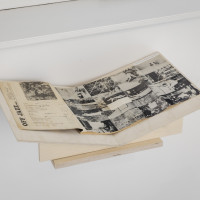
Between archive and resonance
In Disappearing Body…, the archive is presented precisely as an archive. There are vitrines with notes, photographs pinned to the wall, and an extensive handout detailing the works, their context, and the artist. At the same time, a wise decision has been made to let a number of contemporary artists interpret Tsujimura’s work, either as re-enactments of her performances or through new works created in the same spirit.
The instruments seem to circle each other cautiously, improvising and probing in an infinitely extended concert at a slowed-down tempo
Composer and sound artist Aase Nielsen, for example, composer and sound artist Aase Nielsen has created the piece Sextet, a kind of soundscape that envelops the archive and is based on Tsujimura’s ideas of collective creation. The composition plays from six speakers, each acting as a separate part in an ensemble. A viola scratches dry and cold from one speaker, while the bright tone of a vibraphone trembles from another. The instruments seem to circle each other cautiously, improvising and probing in an infinitely extended concert at a slowed-down tempo.
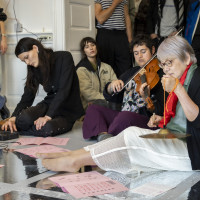
At the exhibition’s opening, Nielsen and her ensemble performed a related work, How to Play (4 studies for ensemble or soloist) – a form of controlled improvisation based on a set of performative instructions, which are also included in the exhibition. The piece, which in principle can be performed with any instrument, appeared as an experimental negotiation between the five musicians, an exercise in how the collective balances chance, agency, and co-creation in a fluid tension between order and intuition.
There is something curious in this attempt to conjure an artist who seemed drawn toward dissolution and disappearance
There is something curious in this attempt to conjure an artist who seemed drawn toward dissolution and disappearance, toward becoming an invisible and imaginary body, toward dance without body, without dance. It is precisely the role of the archive to hold and present the traces of a practice, and one can’t help but wonder whether Tsujimura would have wanted this preservation. That is why it feels refreshing that the new works in the exhibition interpret and draw inspiration from her rather than merely fixating on the overexposed photographs of disappearing bodies. In this way, the new works and the archive weave into each other, gently and respectfully like the viola and vibraphone – as a conversation between the ghost of Tsujimura and what comes after her.
»Disappearing Body – Becoming Tsujimura«. Aase Nielsen, Body_hacker, Yoshiko Shimada. Heirloom – Center for art and archives. Curated by Bluestockings (bs). Exhibition period: June 6 – July 13, 2025
English translation: Andreo Michaelo Mielczarek. Proofreading: Seb Doubinsky
